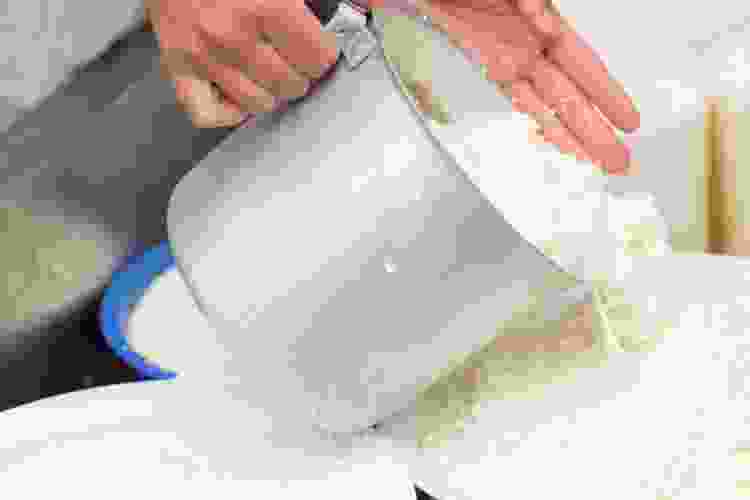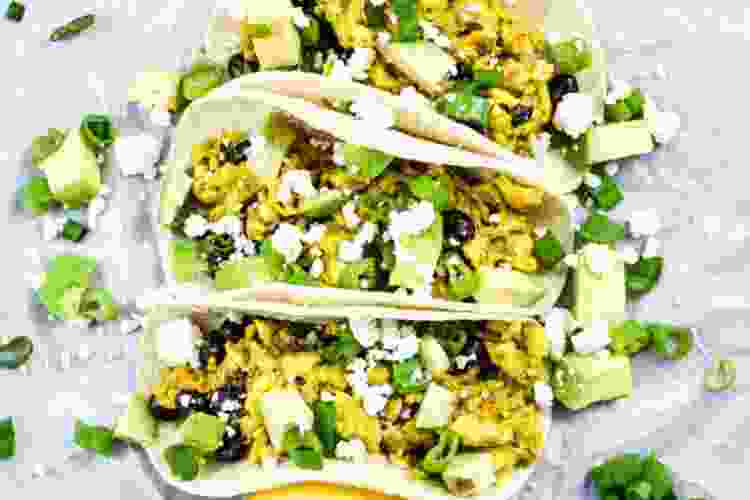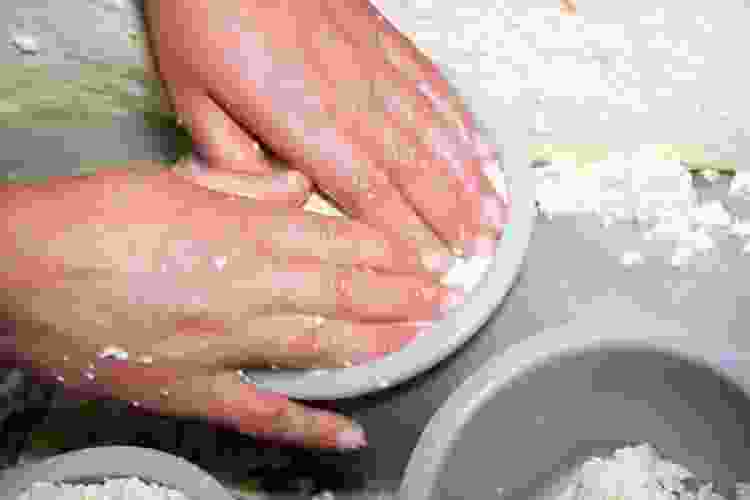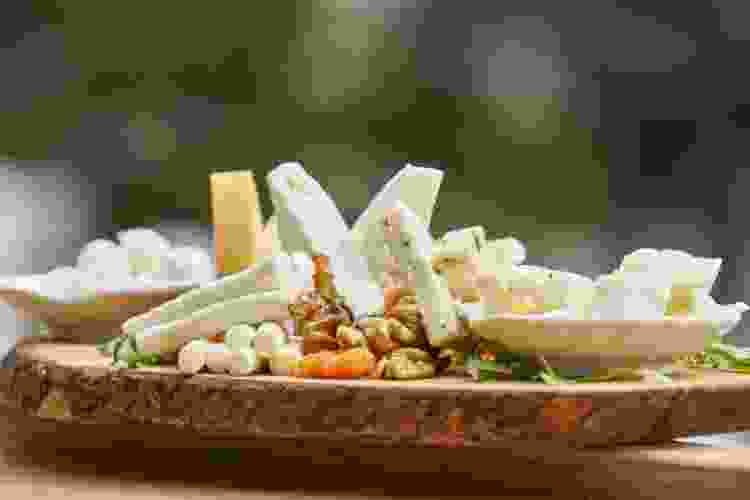Beyond Tacos: All You Need to Know About Cotija Cheese in 2025

Chances are good that you’ve had more than a few dishes topped with the creamy, slightly salty crumble of Cotija cheese. While it’s a classic on tacos, tostadas and elote, this cheese is far more versatile than you might think. Cotija cheese can elevate everything from salads and pasta to grilled corn and even fruit and it’s a great addition to any charcuterie board ideas.
It deserves as much attention as that fine aged Gouda you pair with a glass of wine. The Cheese Atlas even calls it the "Mexican Parmesan," recognizing its ability to complement a wide range of flavors and textures.
Jump to Section
- What Is Cotija Cheese?
- How is Cotija Cheese Made?
- Etymology of Cotija Cheese
- Flavor Profile of Cotija Cheese
- Creative Uses for Cotija Cheese
- Best Cotija Cheese Pairings
- Health Benefits of Cotija Cheese
- How to Make Cotija Cheese at Home
- Where to Buy Cotija Cheese
- Cotija Cheese FAQs
Feature image (via Instragram)
What Is Cotija Cheese?

Cotija cheese is a hard, crumbly cheese often compared to Feta, but it’s made from cow’s milk rather than sheep’s milk. This creamy white cheese is aged for several months and is typically sold in wheels or wedges and served in small crumbles. It's often used as a topping or garnish on popular Mexican dishes like tacos, quesadillas, tostadas and even elote.
Many people mix up cotija cheese vs queso fresco, but they are not the same. Cotija cheese has a distinct yet mild flavor that adds a nice tang and hint of salt to dishes. Queso fresco, on the other hand, is much softer and milder with a slightly salty, milky taste. Cotija cheese originated in the town of Cotija, Michoacán, Mexico and has been a staple in Mexican cuisine since the 16th century. Today, it’s widely used and loved internationally.
How Is Cotija Cheese Made?

The process of making cotija cheese starts similarly to most cheeses: rennet is added to heated cow's milk. Once the milk coagulates and forms curds, the curds are cut into small pieces and heated to the desired consistency. These curds are then salted for flavor and hand-pressed into circular molds. The molded curds are then left to age for several weeks, up to a few months. This dry-aging process helps develop Cotija cheese's distinct, tangy flavor. Before selling, the cheese can be wrapped and sold either in circular units or triangular wedges.
If you’re curious about cheese making or cooking with Cotija cheese, checking out cooking classes in your neighborhood or online cooking classes will get you started in the right direction. There are tons of options from cooking classes in NYC to cooking classes in Atlanta or cooking classes in Baltimore, just to name a few.
Etymology of Cotija Cheese
Cotija cheese originates from the town of Cotija in Michoacán, Mexico, where it has been crafted for over 400 years. Introduced by Spanish settlers, this cheesemaking tradition became deeply rooted in the local culture. Introduced by Spanish settlers, this cheesemaking tradition became deeply rooted in the local culture. Today, Cotija cheese is one of the region’s top exports, representing Michoacán’s rich culinary traditions and earning recognition both across Mexico and around the world.
Flavor Profile of Cotija Cheese
Cotija cheese, like all cheeses, has its own distinct flavor profile. It's best described as tangy, slightly sour and salty. While some people compare it to feta cheese, Cotija is less briny since it’s not stored in liquid like feta, giving it a drier texture.
Creative Uses for Cotija Cheese
While cotija cheese is most commonly used as a garnish for many Mexican dishes, it also has some creative uses. Its tangy, salty flavor can add a unique twist to salads, pasta, roasted vegetables and even burgers.
1. Scrambled Eggs

Instead of salting your scrambled eggs, mix in a few crumbles of Cotija cheese while it finishes cooking for a nice tang.
2. Salad Topping
Just as you might add crumbled goat's cheese or Feta to a salad, Cotija cheese is a nice pairing with greens or on top of soup.
3. Grilled Corn Topping

Even if you don’t want to go through all the steps to make elote (not that it’s that complicated), sprinkling Cotija Cheese on top of grilled corn works just as nicely.
4. Meatballs
Cotija cheese also works surprisingly well in veal meatballs, coated in a zesty tomato sauce.
5. Mexican Dishes

Anything with Mexican flavors or ingredients is usually a great chance to use Cotija cheese. For example, grilled corn and zucchini salad can be served hot or cold with a generous sprinkle of Cotija cheese and it makes for a great picnic food idea.
6. Fruit Toppings
Sprinkling a small amount of Cotija cheese over fruits like watermelon and mango enhances their natural sweetness, adding a salty touch that brings out more flavor.
7. Spicy Dishes

The salty, tangy flavor of Cotija cheese pairs wonderfully with heavily spiced dishes, like stewed or grilled meats, balancing out the bold flavors.
8. Stewed Meats
Meats stewed with tomato, paprika, chile powder and other bold flavors are perfectly complemented by the salty, tangy kick of Cotija cheese.
9. Anything Citrus

The saltiness of Cotija cheese pairs well with the refreshing tang of citrus, enhancing the flavors of dishes with a zesty kick.
10. Refried Beans
Despite its creamy texture, Cotija cheese pairs wonderfully with refried beans, as its tangy, salty flavor cuts through the richness of the beans. Refried beans are a classic comfort food for many and can be made with extra layers of flavor like bacon and jalapeno peppers.
Best Cotija Cheese Pairings
Just as you'd pair a rich Barolo with steak or a refreshing rosé with seafood, Cotija cheese also has some ideal drink pairings.
Light-bodied wines are a perfect match for Cotija cheese, with options like sparkling whites, rosé or champagne enhancing its tangy, salty flavor. A crisp Pinot Grigio also complements Cotija cheese well. Surprisingly, even a light-bodied red, such as a chilled Beaujolais, pairs nicely, particularly when the cheese is enjoyed with dishes like stewed chicken or steak.
How to Make Cotija Cheese at Home

Making Cotija cheese at home is possible, but it requires the right tools and ingredients. You’ll need around two gallons of full-fat cow’s milk (raw is ideal), rennet, two types of cultures, a cheese press, a non-reactive pot for heating, a curd knife and a few other essentials. The process involves heating the milk to a specific temperature, then adding the rennet and cultures to begin the curdling process.
As the milk thickens, you'll cut the curds into smaller pieces. After separating the curds from the whey, strain the mixture through cheesecloth and press it into a mold. Then, it needs to age for several weeks or months.
Unless you’re heavily interested in cheese making and have all the proper equipment and ingredients, buying Cotija cheese is likely the easier route. But if you're looking for gifts for foodies who love making things from scratch, a cheese-making kit could make a perfect gift.
Where to Buy Cotija Cheese
Cotija cheese is widely available across the U.S. and around the world. You can find it in major retailers like Target, Walmart, Kroger and Publix, usually in the refrigerated section. It’s typically sold in small rounds or triangular wedges, with Cacique being one of the most popular brands you can easily find in stores across the country.
Cotija Cheese FAQs
What Cheese Is Cotija Cheese Similar To?

Cotija cheese definitely stands out, but there are a few cheeses that share similarities. Feta cheese is comparable in both taste and texture, though it has its own unique characteristics. Parmesan is another cheese that resembles Cotija and in some cases, it can be used as a substitute.
How Do You Pronounce the Word Cotija?
Cotija is pronounced koh-tee-huh.
What Does Cotija Cheese Taste Like?
Cotija cheese has a distinct tangy flavor with a notable saltiness. The longer it's aged, the more pronounced the tang becomes, adding depth to its flavor profile.
Does Walmart Sell Cotija Cheese?
Yes! Walmart sells cotija cheese nationwide.
From its bold flavor to its endless culinary possibilities, Cotija cheese is a delightful addition to many dishes. As versatile as it is delicious, this cheese is much more than just a garnish — it’s a key ingredient that can transform your meals. It goes with pretty much any Mexican dish, but it’s surprisingly versatile. A bite of ripe mango with a fresh crumble of cotija cheese might be the most unexpectedly delicious bite.
For even more fun foodie ideas, check out other experiences happening on Classpop!

